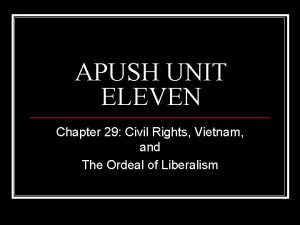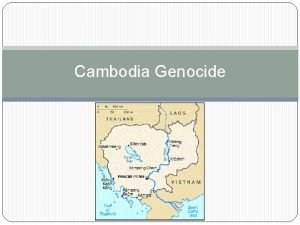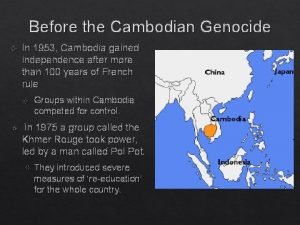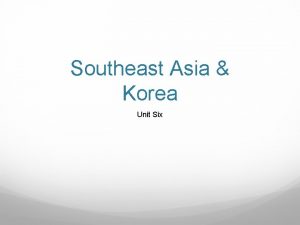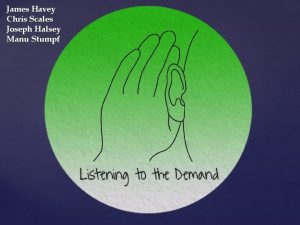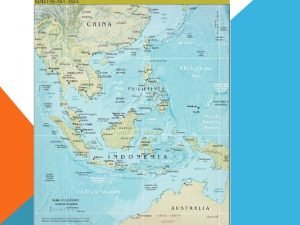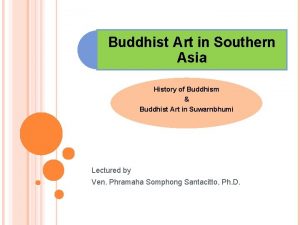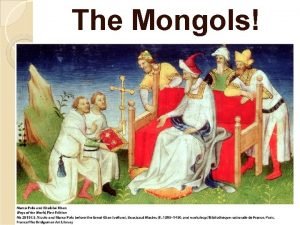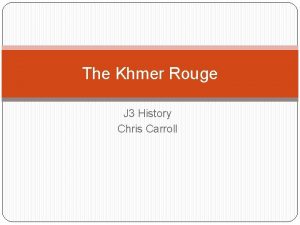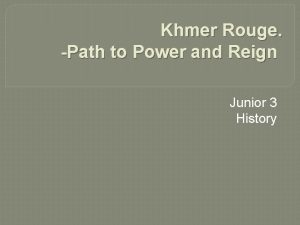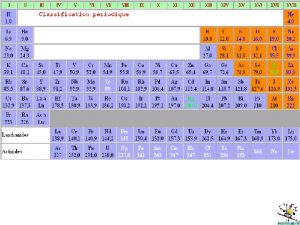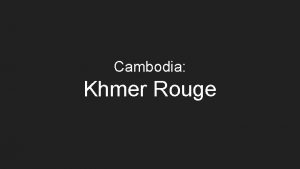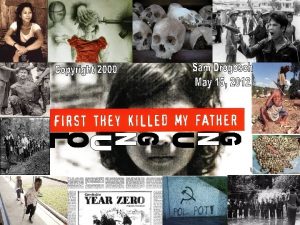Khmer Rouge History Junior 3 Chris Carroll 6















- Slides: 15

Khmer Rouge History Junior 3 Chris Carroll 6. What Events Led to the Fall of the Khmer Rouge Regime?

Lesson Objectives �By the end of the week… �Everyone will: � Be able to identify the key events which led to the fall of the Khmer Rouge. �Some � Be of you will: able to explain in depth HOW the events led to the fall of the Khmer Rouge.

The Fall of the Khmer Rouge How many key events do we already know of which led to the fall of the Khmer Rouge?

Internal Influences �Power struggles, challenges etc. �The uprising led by former Khmer Rouge officer, Heng Samrin. �Is he a hero or a villain? �To what extent did he contribute to the collapse of the Khmer Rouge regime?

�By December 1978, because of several years of border conflict and the flood of refugees fleeing Kampuchea, relations between Cambodia and Vietnam collapsed. �Pol Pot, fearing a Vietnamese attack, ordered a pre-emptive invasion of Vietnam. His Cambodian forces crossed the border and looted nearby villages. �Of the 3, 157 civilians who had lived in Ba Chúc, only two survived the massacre. These Cambodian forces were repelled by the

Kampuchean United Front for National Salvation �The Kampuchean United Front for National Salvation were an organisation that included many unhappy former Khmer Rouge members. �They worked with the Vietnamese armed forces and invaded Cambodia, capturing Phnom Penh on January 7, 1979. �Despite a traditional Cambodian fear of Vietnamese domination, defecting Khmer Rouge activists assisted the Vietnamese, and, with Vietnam's approval, became the core of the new People's Republic of Kampuchea, quickly dismissed by the Khmer Rouge and China as a "puppet government. "

Khmer Rouge �At the same time, the Khmer Rouge retreated west, and it continued to control certain areas near the Thai border for the next decade. These included Phnom Malai, the mountain areas near Pailin in the Cardamom Mountains and Anlong Veng in the Dângrêk Mountains. �These Khmer Rouge bases were not selfsufficient and were funded by diamond and timber smuggling, military assistance from China channeled by means of the Thai military, and food from markets across the border in Thailand.

Heng Samrin �Heng Samrin is a Cambodian politician. �(born 1934) He was the chairman of the People's Republic of Kampuchea and the State of Cambodia (1979– 1993), and later vice chairman (1998– 2006) and chairman of the National Assembly of Cambodia since 2006.

Heng Samrin is a hero! �He became a member of the Khmer Rouge communist movement led by Pol Pot, and became a political commisar and army division commander when the Khmer Rouge took over the government in 1975. In 1978, he defected from the Khmer Rouge, which was backed by China, and fled to Vietnam. There he became one of the founding members of the Kampuchean United Front for National Salvation (FUNSK). Later that year, Heng returned to Cambodia, leading a rebellion which was

�The Cambodian People's Party recently released a book about him called, A Man of the People, dedicated to him being a hero.

�After a Vietnamese invasion of Cambodia overthrew the Khmer Rouge in 1979, Vietnamese occupation authorities established the People's Republic of Kampuchea, installing Heng and other pro. Vietnamese Communist politicians as leaders

�He became chairman of the People's Revolutionary Council of the PRK in 1979. In 1981 he became chairman of the Council of State and secretarygeneral of the People's Revolutionary Party. Though at first he was the effective leader of the government, he quickly lost much of his power when the more moderate Hun Sen became Prime Minister in 1985.

�As Vietnamese influence declined, Heng began losing his posts, including the post of secretary-general in 1991 and chairman of the council of state in 1992. When King Norodom Sihanouk was restored in 1993, Heng was given the honorary title of Sâmdech, senior advisor of the King, and was made honorary chairman of Hun Sen's Cambodian People's Party. Since 2006, he is Chairman of the Solidarity Front for Development of the Cambodian Motherland.

Heng Samrin �Heng Samrin is a national hero for Cambodia. He has always done what was right for the country, when he realised that the Khmer Rouge were detrimental for the country, he left them and joined Vietnam to over throw the Khmer Rouge and save the people of Cambodia from the terrible regime. �This is supported by the respect and love the Cambodian people have for him along with the book dedicated to his life. � Also, the support and loyalty shown by another Cambodian hero (Sihanouk) demonstrates the value this man is to his country.

Heng Samrin is Villain! �Now it’s your turn to use PERSUASIVE writing to convince me that Heng Samrin is not a hero and that he has actually been a villain towards his own country. �You can present your homework on a powerpoint presentation, speech or another form of presentation. �You may work on your own, in pairs or even group of 3.
 Bloody sunday apush
Bloody sunday apush Khmer rouge timeline
Khmer rouge timeline Khmer rouge
Khmer rouge Six khmer
Six khmer Sexkhmer com
Sexkhmer com Southeast asia climate
Southeast asia climate Empire khmer
Empire khmer Khmer empire
Khmer empire Junior cycle history learning outcomes
Junior cycle history learning outcomes Carroll isd naviance
Carroll isd naviance Dlp roadmap
Dlp roadmap Pirámide de carroll
Pirámide de carroll Carroll doctrine
Carroll doctrine Intrinsic and extrinsic motivation
Intrinsic and extrinsic motivation 10 primary emotions carroll izard
10 primary emotions carroll izard Archie carroll pyramid
Archie carroll pyramid
